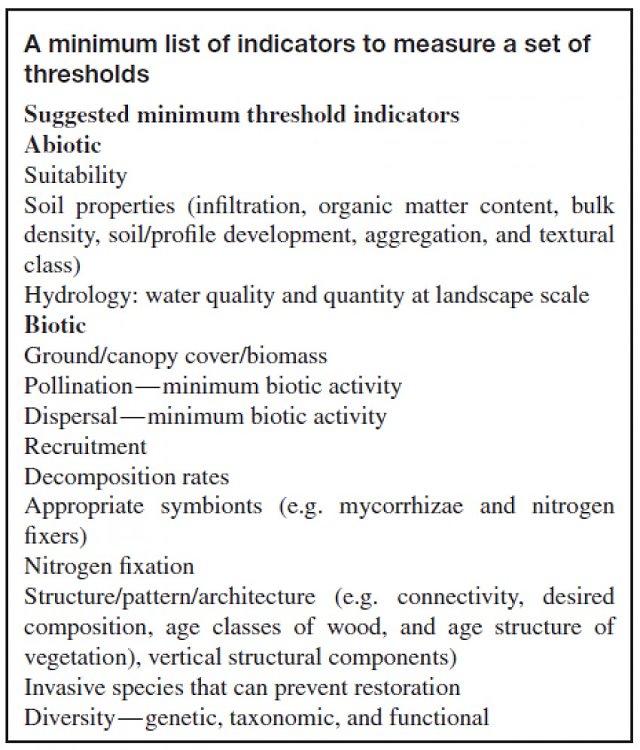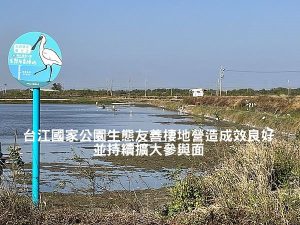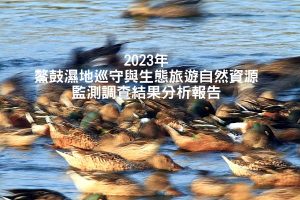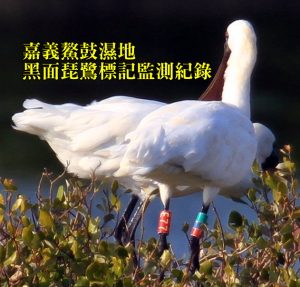 Credit: IUCN
Credit: IUCN
森林是老天給予地球萬物除了陽光、空氣、水外,另一個極佳的禮物,她有吸碳儲碳、淨化空氣、涵養水源、水土保持、防風固沙、調節氣候、滋養萬物、提供資源、美化環境、怡情養性……等許多功能,森林若被砍除,前面講的這些好處不僅沒了,還會帶來加劇溫室效應、水土流失、水源乾涸、生物滅絕、資源匱乏……等等災害。
森林是人類生活依托的寶藏,從古至今,人類從森林予取予求,只是古時候因人口與技術有限,對森林資源的取用尚不至於太過,而今人口暴漲加之人心貪婪,常常毫無止盡的砍伐、掠奪森林資源,造成大地永久的傷痕,無以回復。
森林不是不能取用,不是不能砍樹,否則像臺灣從1991年宣布禁伐天然林後,所有木材需求卻是砍其他地區(如東南亞)的森林來滿足,這是以鄰為壑的做法,實不足取。森林應該是可持續利用、可持續經營的自然資源,必須有效管理、明智取用,一方面砍樹或建設,一方面也要用心復育,讓森林生態不因砍樹或建設而萬劫不復。
在被破壞過的森林地帶成為一大片裸露土地後,如果開始植樹,有如在死亡的軀體上灌入再生魂魄,從空無一物到鬱鬱蔥蔥的地景,其間生命恢復的程度到底要如何評估?
剛在《復育生態學期刊》(Restoration Ecology Journal)發表的一篇研究指出:有效的生態復育監測系統須顧及三個要素:(1)引發生態系劣化的原因(狀況)(2)復育期間生態系的變化(結果)(3)復育計畫所採取的措施(產出)
“Successful monitoring systems for restoration need to consider three key elements: (1) the factors that caused degradation to occur (the status); (2) the changes to the ecosystem during restoration (the outcomes); and (3) the steps taken by the restoration project (the outputs).”
這項研究測試了無機體因子(如土壤剖面、水量或水質、污染)及有機體因子(如土壤表層、授粉媒介、原生物種)。建構這些基本指標時必須選擇適合在地的,並且考量到其他因素(如技術能力、關鍵物種的選定、計畫需求、文化關聯等)。作者提出了一串包含無機體與有機體因子的最基本指標作為監測森林復育成效之用。
The article examines abiotic indicators (think soil profile, water quantity or quality, or contamination) and biotic indicators (think solid ground cover, pollinators, native species). These threshold indicators must ultimately

最基本的評估指標 A minimum list of indicators to measure a set of thresholds
建議的最基本指標 Suggested minimum threshold indicators
無機體因子 Abiotic
適宜性 Suitability
土壤特性(滲透、有機質種類、土壤容積密度、土壤剖面延伸資料、聚合、質地等級) Soil properties (infiltration, organic matter content, bulk density, soil profile development, aggregation, and textural class)
水文學:地景尺度下的水質與水量 Hydrology: water quality and quantity at
有機體因子 Biotic
地面/地表覆蓋物/生物量 Ground/canopy cover/biomass
授粉—最低限度的生物活動 Pollination一minimum biotic activity
散佈—最低限度的生物活動 Dispersal一minimum biotic activity
補充 Recruitment
分解率 Decomposition rates
適當的共生有機體(如菌根與固氮) Appropriate symbionts (e.g. mycorrhizae and nitrogen fixers)
固氮作用 Nitrogen fixation
組織/型態/構造(如互連、想要的組合、木頭齡級、植物年齡組成、垂直結構成分) Structure/pattern/architecture (e.g. connectivity, desired composition, age classes of wood, and age structure of vegetation, vertical structural components)
阻礙復育的入侵物種 Invasive species that can prevent
多樣性—基因多樣性、種類多樣性、功能多樣性 Diversity一genetic, taxonomic, and functional
延伸閱讀:
Biodiversity guidelines for forest landscape restoration opportunities assessments
How do we know when forest landscape restoration has been achieved?
CI讓亞馬遜雨林告知人類,是人類需要它,它不需要人類(影片)







